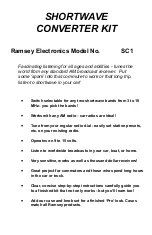
BLACK BOX
®
Media Converter Switches Installation and User Guide
22
2.3 Frame Buffering and Latency
The LBH100A and LBH110A Series Media Converter Switches are store-and-
forward switches. Each frame (or packet) is loaded into the Switch’s memory and
inspected before forwarding can occur. This technique ensures that all forwarded frames
are of a valid length and have the correct CRC, i.e. they are good packets. This eliminates
propagation of bad packets, enabling all of the available bandwidth to be used for valid
information.
While other switching technologies such as "cut-through" or "express" impose
minimal frame latency, they will also permit bad frames to propagate out to the Ethernet
segments connected. The "cut-through" technique permits collision fragment frames,
which are a result of late collisions, to be forwarded to add to the network traffic. Since
collisions and bad packets are more likely when traffic is heavy, the result of store-and-
forward operation is that more bandwidth is available for good packets when the traffic
load is greatest.
To minimize the possibility of dropping frames on congested ports, each
LBH100A and LBH110A Series Media Converter Switch dynamically allocates buffer
space from 128Kb memory pool, ensuring that heavily used ports receive very large buffer
space for packet storage. (Many other switches have their packet buffer storage space
divided evenly across all ports, resulting in a small, fixed number of packets to be stored
















































